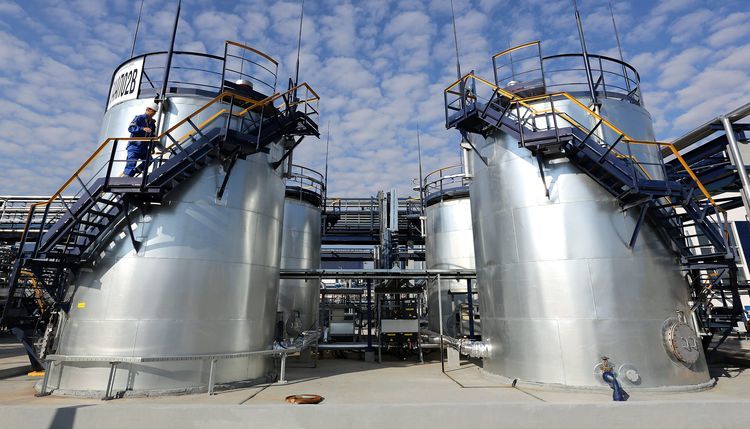
Goldman Sachs Group Inc. says there’s no fundamental evidence in the oil market to justify this week’s selloff in prices.
The bank finds the pace of declines in U.S. crude inventories encouraging, with an acceleration in draw downs expected through the second quarter as OPEC cuts output and demand grows, according to a report dated April 20. Meanwhile, a mid-week slide in prices was driven by crude trading through its 50-day and 100-day moving averages, Goldman said.
Goldman is reiterating its confidence in oil at a time when investors are fretting over whether U.S. production, which has climbed to the highest since August 2015, will undermine curbs by the Organization of Petroleum Exporting Countries and its allies. After posting three straight weekly gains on expectations OPEC will extend its supply cuts, crude is now set for a drop this week following a decline of more than 3.5 percent on Wednesday.
“We view technicals rather than fundamentals as the driver of this move lower,” analysts including Damien Courvalin and Jeffrey Currie wrote in the report. The U.S. inventory data released on Wednesday was “in line with expectations,” they said, reiterating the bank’s sequentially higher second-quarter Brent price forecast of $59 a barrel.
Brent, the benchmark for more than half the world’s oil, was trading 5 cents higher at $53.04 a barrel on the London-based ICE Futures Europe exchange at 1:56 p.m. Singapore time. West Texas Intermediate, the U.S. marker, was at $50.80 a barrel on the New York Mercantile Exchange.
U.S. Supplies
Prices dropped on Wednesday after Energy Information Administration data showed U.S. gasoline supplies increased for the first time since February and crude production rose for a ninth straight week. Inventories fell for a second week, after surging to a record last month.
“The sell-off occurred an hour after the release of this U.S. data and accelerated as prices traded through their 50 and 100 day moving averages, a repeat of the March 7 and October 29 sharp decline in prices,” the analysts wrote. The “decline also featured an increase in open interest, suggesting that like in these previous instances, new shorts were the drivers of the move lower.”
Goldman also believes gasoline demand is probably being understated, “with the more accurate ethanol implied demand metric pointing instead to resilient gasoline demand growth, while distillate demand remains strong,” according to the report.
“We find in fact that the U.S. inventory data since March has been surprisingly good: crude inventories have been tighter than seasonal through March and April, with main petroleum products drawing faster than seasonal since February,” the analysts wrote.
Recommended for you
